INSTITUTE OF PHILOSOPHY OF NATURE
Abstract
The vertical temperature distribution in the atmosphere of the Earth and other celestial bodies reveals a kind of thermal polarisation in the structure of atmosphere. Such a thermal structuring exhibiting temperature inversion is only feasible if the thermal charge phenomenon has a similarity with the electrical charge phenomenon. This article discusses the vertical temperature gradients in the atmospheres of the Earth, the Sun and other planets with an objective to understand temperature as thermal charge potential of non-electric charge (thermal charge).
Subject key words: atmosphere, thermal structure of atmosphere, temperature inversion, solar atmosphere, atmosphere of Earth, planetary atmosphere.
Introduction
There exists a definite pattern of global thermal charge potential (temperature) in the atmosphere of the Earth and that in other celestial bodies. The thermal charge potential structure of the atmosphere of the Earth is shown in (Fig.1). It may be seen from the figure that the heights of the layers of atmosphere having minimum and the maximum temperatures bears a correlation which shows that the basic cause of temperature stratification in any given layer is not due to an independent local phenomenon. At present, the cause of the specific temperature of the specific layer is ascribed to some local physical and chemical interactions. We have not made a comprehensive study to know the bearing among different layers and understand why the thermal structures of different celestial bodies have a remarkably uniform pattern.
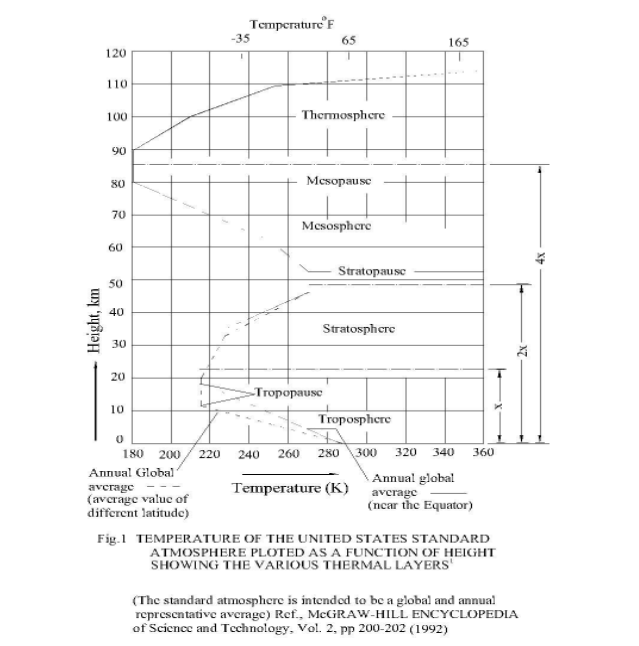
Any portion of the atmosphere, if heated due to some reason, causes convection and attains the temperature corresponding to the global thermal structure. The large-scale convection, in extreme cases, results cyclones, tornados and hurricanes. One may wonder- how the temperature inversion in atmosphere remains stable without causing convection. This natural phenomenon can be understood by the new interpretation of temperature as thermal charge potential having charge attraction property at a thermal charge potential difference.
From the physical and chemical laws, the temperature of atmosphere can be increased by absorption of solar radiation, by adiabatic compression of gas and by exothermic photochemical reaction. Similarly, the temperature of the atmosphere can be decreased by radiating to the open sky, expansion of gas and by endothermic photochemical reactions. We apply these laws of physics and chemistry to justify why a particular layer is having high or low temperature? In this analysis, it is difficult to answer why the specific layer has specific heat absorption or emission properties at specific heights bearing correlations? Again, why a given specific composition of the gas with required physical and chemical properties is stratified at specific height? It is difficult to answer whether the global temperature structure controls the physicochemical reactions or the physicochemical reactions develop the temperature. The thermal structure of the atmosphere of any celestial body has a definite pattern where the layer immediately above the surface has always a low temperature. Further, the heights of the high and the low temperature layers bear a definite correlation. It is as if, the thermal structure of atmosphere is due to a more fundamental cause than the physicochemical processes.
Though we surveyed the temperature of different layers of the entire atmosphere of the Earth, we never made an integrated analysis of the entire thermal structure. We only attempted to justify the prevailing temperature of a given layer of the atmosphere by assuming different physical and the chemical reactions taking place in the layer. Such a study lacks comprehensive analysis of the thermal structure. When two known events A and B are occurring simultaneously due to an unknown event C, scientists investigating the events A and B only are able to understand the event A to have been caused by event B or vice versa. This has happened to our independent study of atmospheric thermal layers. On one hand, we work out the gravitational stratification of the atmospheric fluid considering the temperature. On the other hand, we consider the atmospheric constituents of particular altitude by gravitational stratification and then justify the prevailing temperature. It would have been proper to ascertain any one parameter from a broad-based universal cause.
To understand the universal cause of thermal structuring of the atmosphere of the Earth, a broad-based study involving different layers of the atmosphere of the Earth as well as the atmospheres of other celestial bodies in solar system is essential to obtain the universal norm of thermal structure. The vertical temperature profiles of the atmospheres of the Earth, Sun, Mars, Venus, Jupiter and Saturn are shown in (Fig.1), (Fig.2), (Fig.3), (Fig.4), (Fig.5) and (Fig.6) respectively. We notice the surface temperature of the Earth is higher than the immediate atmosphere above it. This phenomenon is not specific to the Earth alone, and it is invariably prevalent in all celestial bodies in solar system. The temperature of the atmosphere of the Earth goes on changing alternatively low and high in absolute scale, which in different relative scale with varying mean reference zero temperature can be said to have been changing alternatively with negative and positive thermal charge potential values. Today, we have the record of temperature variation in the atmosphere of different celestial bodies from the artificial satellite data. This phenomenon is not confined to planets alone. The temperature of the atmosphere of the Sun above the photosphere also follows the same pattern. The temperature of the photosphere is 6000o C which goes on decreasing with height from photosphere and at 500km from photosphere the temperature reaches a minimum of 4300o C. Thereafter temperature goes on increasing to 10,000o C at chromospheres and a temperature of million degrees at solar corona. The increase of high temperature of solar corona has posed a great problem since such high temperature cannot be achieved by exothermic chemical reactions. Some scientists have anticipated the increase in temperature is due to the restricted motion of the charge particles in the solar magnetic field. The analysis of the atmospheric thermal structuring become simple when analysed from the universal thermal charge polarisation which is uniformly applicable to Sun and planets.
The temperature profile of solar atmosphere is shown in (Fig.2). It is interesting to note that the low and the high temperatures do not occur at any arbitrary height but they bear a definite relation for their placement following the general correlation discussed for shell spacing given [1] [3] [4]. The electrically charged shells primarily follow this relation. On survey of the atmospheres of different celestial bodies, we notice the basic cause of alternate low and high temperature of atmospheric shells is not due to physical and the chemical reactions in the shells but due to some more basic interaction.
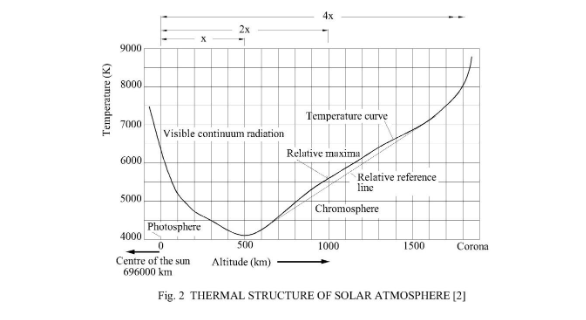
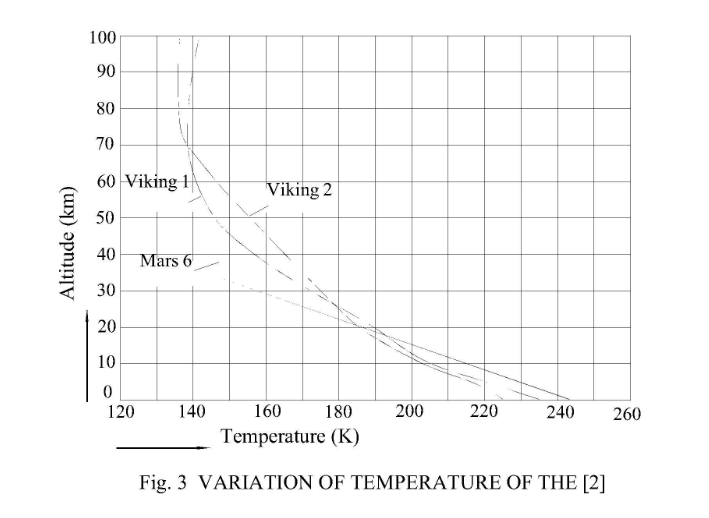
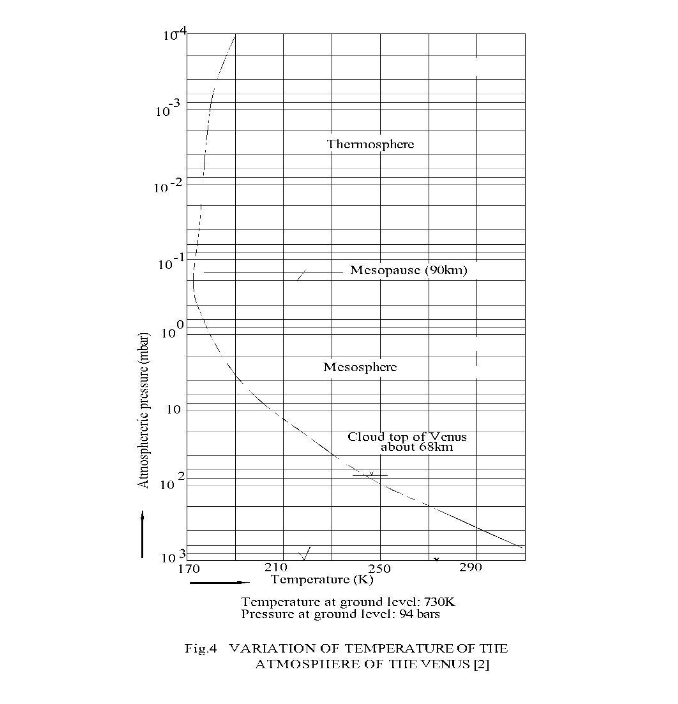
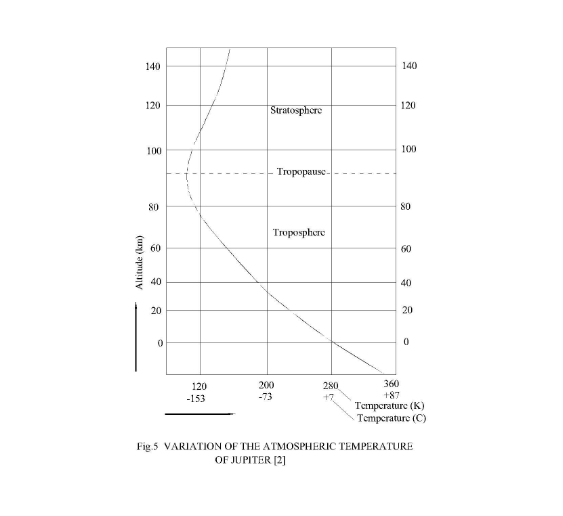
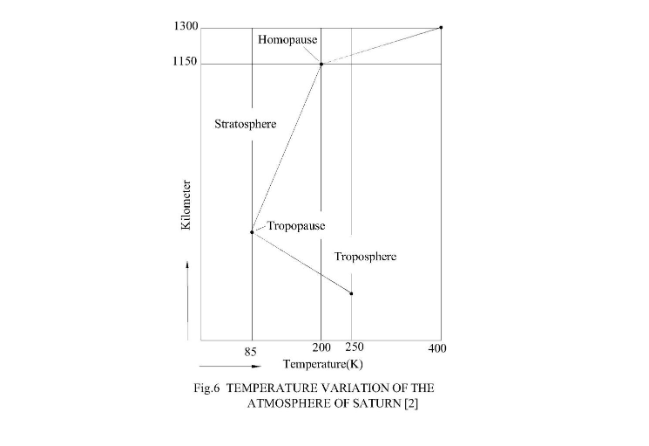
Conclusion
The comprehensive study of entire thermal structure of atmosphere of a celestial body gives us scope to study the temperature pattern and know the interrelations. When we study the thermal structure of different celestial bodies and look for similarity in their structures a universal norm is focused. Analysis of universal cause for the universal norm reveals the basic truth. The macro bodies possess thermal energy by virtue of temperature (thermal charge potential) and possess kinetic energy by virtue of the velocity (dynamic state). But for the micro particles the temperature (thermal charge potential) is not conceptualised in a like manner, and the thermal energy is understood by the average kinetic energy of micro particles. The new interpretation of heat as thermal charge and temperature as thermal charge potential helps to generalize the electric and nonelectric charge to augment micro domain physics.
This article is a part of the original work published in the book “Planetary electrodynamics-II”, Volume-2 of the series “Dynamics of universe; interplay of matter, space and charge”, 2000 by the same author.
References
Mcgraw-Hill Encyclopedia of Science & Technology, Vol. 2, (1992) p 200-202.
Audouze, J. and Israel, G. Ed.; The Cambridge Atlas of Astronomy, Second Edition, Cambridge University Press, (1998).
Natural electric charge structure in earth and its atmosphere, Artcle-1, Issue-1, Vol-2, Journal-Towards Unification of Sciences.

Very nice article